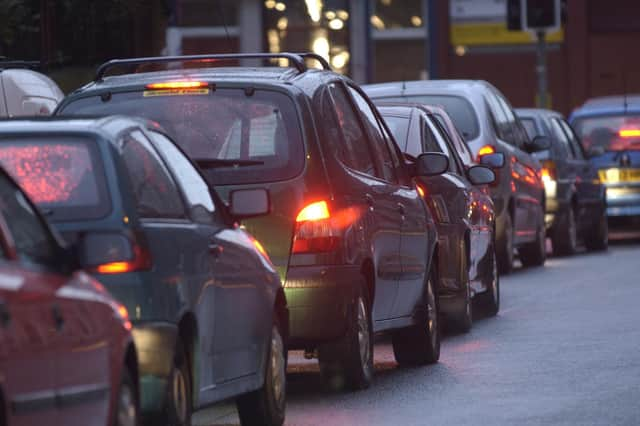Edinburgh could bring in a congestion charge for those driving in from outside the city – Marco Biagi


The aim of the Labour administration of the time was a noble one. By charging vehicles to access the city they believed they could reduce traffic, improve air quality and raise funds for new public transport options. These are objectives most of us would welcome.
The detail of the implementation was botched. People could find many reasons to oppose the plan. Even years later as MSP for Edinburgh Central, I was still hearing complaints about the physical infrastructure that would have had to have been installed in the heart of the city.
Advertisement
Hide AdAdvertisement
Hide AdAlso, given what we now know about the costs of building trams, it is hard to believe the confident assertions. Revenue was originally expected to pay for a line all of its own through the south and east of the city towards Musselburgh. That now seems hopelessly optimistic.
Subsequently, council administrations have chosen other means of controlling traffic in the city centre. By now no one could miss either the investment in cycle paths. What began with off-road routes to help encourage less confident potential cyclists who do not want to share space with cars is now moving into much larger, area-wide calming schemes.
Then there is the 20mph limit and the proposed Low Emissions Zone. None of these have passed without controversy.
The difficulty of parking in Edinburgh is also legendary. Residents have seen ever higher charges for their own parking permits – a congestion charge of its own.
Advertisement
Hide AdAdvertisement
Hide AdSometimes it can feel like Edinburgh residents are the ones who are making all the changes to their lives. What about those who travel in from neighbouring areas?
The census is now almost a decade old, but at that time over 60,000 trips were made by car every day by just those travelling to work in Edinburgh from outside the local authority area. That was double the number that used public transport for work journeys. If our city is to be carbon neutral by the 2030s this must change.
An often-forgotten aspect of the original congestion charge proposal was the creation of two perimeters. The line drawn around the city centre drew much of the local anger, but a second line was set out at the city bypass.
Instead of a congestion charge with two zones, we could therefore have a commuter charge, enforced only at an outer ring. This would be targeted on those who drive in from outside City of Edinburgh to work here every day, ensuring they make a fair contribution.
Advertisement
Hide AdAdvertisement
Hide AdCostings from 2005 showed that, even if only charged at peak hours, such an outer cordon would rapidly pay for the infrastructure needed to administer it. Now is the time to update those costings and start moving on the idea again. Such a plan could reduce congestion in the city and raise money for transport projects, without the city’s own residents having to foot much of the bill.
Marco Biagi is bidding to become the SNP’s candidate for the Scottish Parliament’s Edinburgh Central seat
A message from the Editor:
Thank you for reading this article. We're more reliant on your support than ever as the shift in consumer habits brought about by coronavirus impacts our advertisers.
If you haven't already, please consider supporting our trusted, fact-checked journalism by taking out a digital subscription.
Comment Guidelines
National World encourages reader discussion on our stories. User feedback, insights and back-and-forth exchanges add a rich layer of context to reporting. Please review our Community Guidelines before commenting.